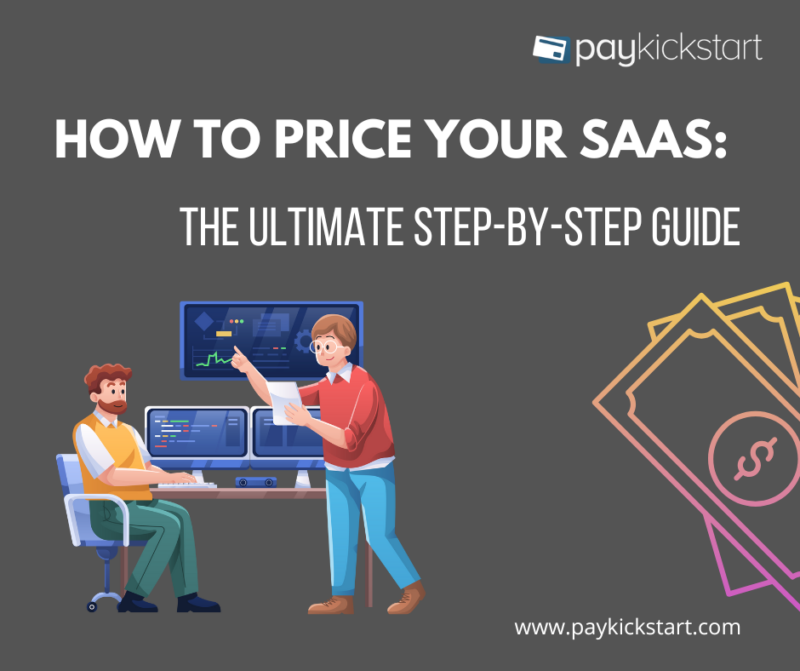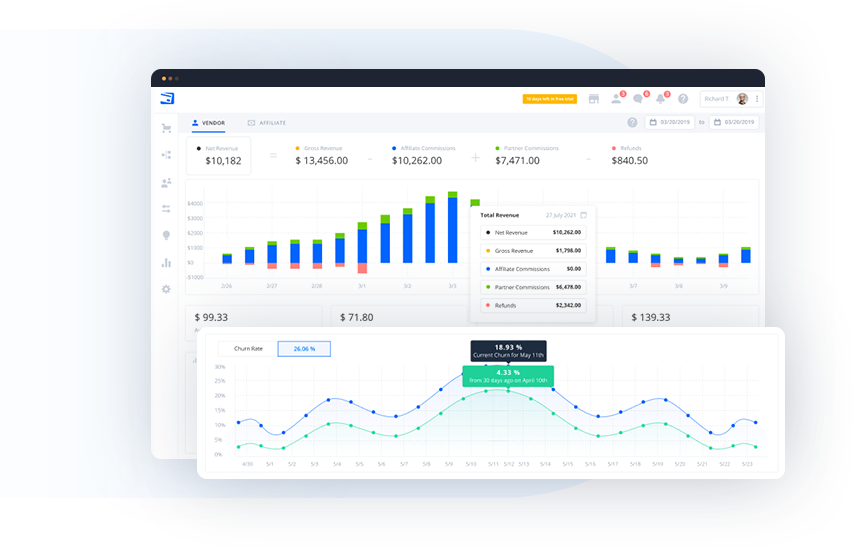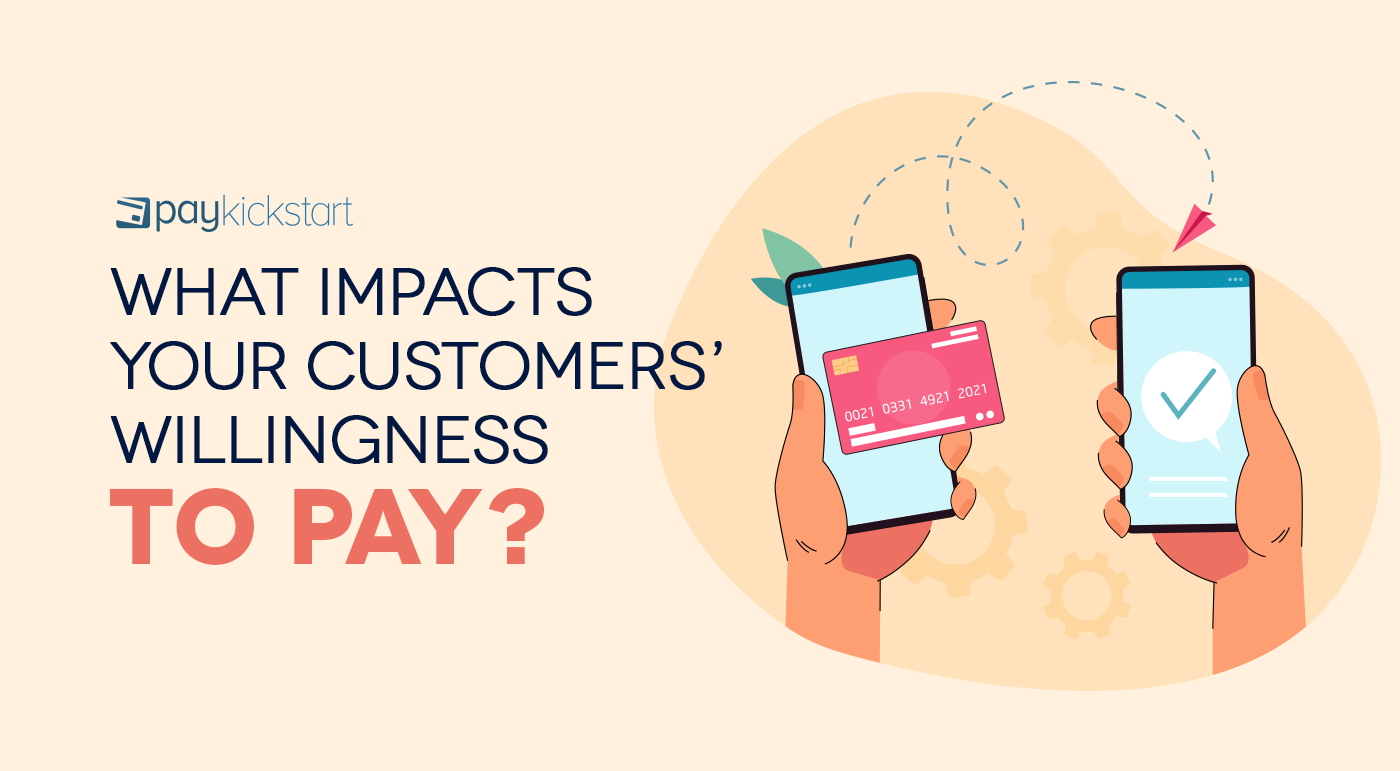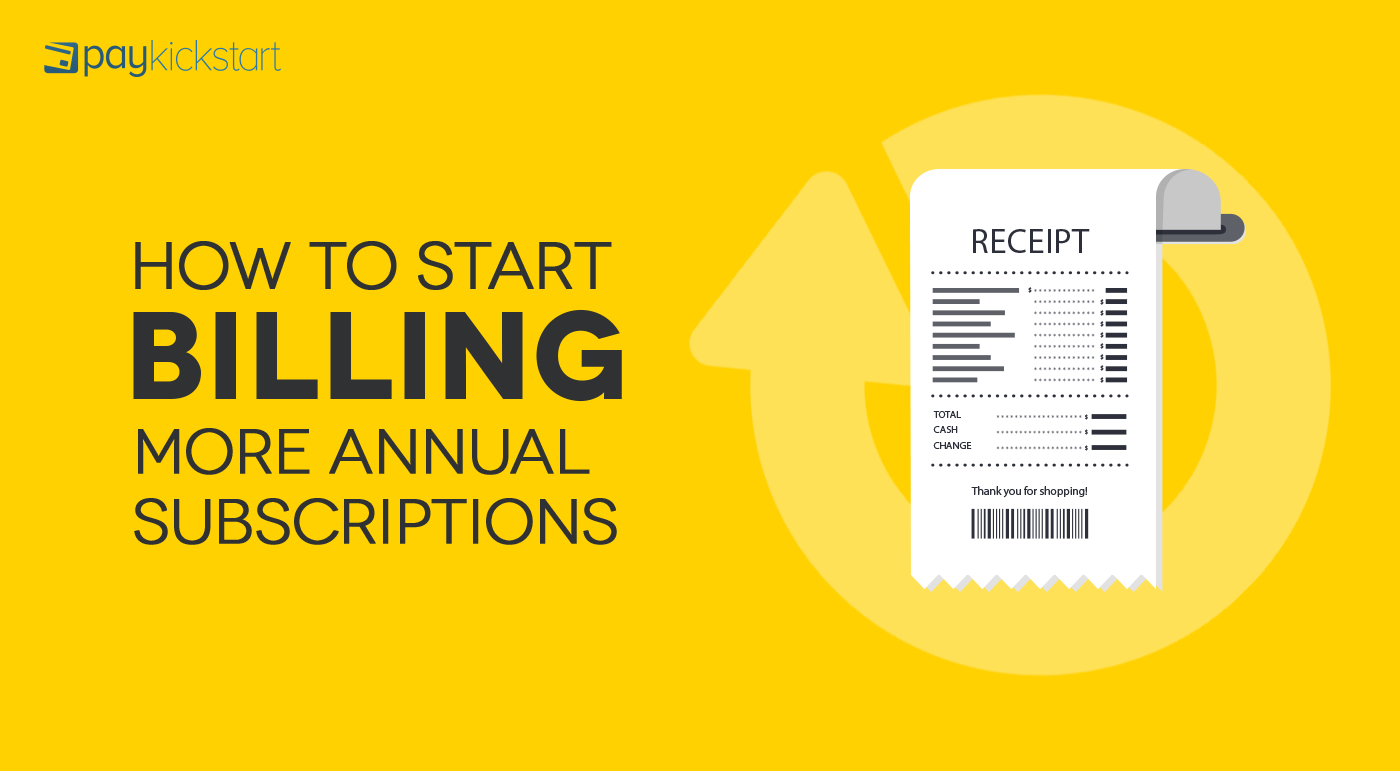Subscription growth hack (by PayKickstart)
Facebook Group - 3,932 members
Visit Group
Discover the essential steps to effectively price your SaaS product with this comprehensive guide.
In the competitive world of Software as a Service (SaaS), pricing plays a crucial role in the success of your business. Finding the right pricing strategy can significantly impact your revenue, profitability, and overall growth. In this step-by-step guide, we will explore the importance of pricing in SaaS, key factors to consider when pricing your SaaS, different SaaS pricing models, and the steps to determine your SaaS pricing.
Effective pricing is vital for SaaS companies as it directly affects their ability to generate revenue and sustain growth. The pricing strategy you choose can influence customer perception of your product’s value, competitiveness in the market, and your bottom line.
When it comes to SaaS pricing, it’s not just about setting a number. It’s about understanding the intricacies of your business and the market you operate in. By carefully considering various factors, you can develop a pricing strategy that maximizes your profitability and positions your product for success.
Price has a direct impact on your business’s financial health and success. A well-thought-out pricing strategy can optimize your revenue and profitability, while a poorly designed one can have adverse effects. It is crucial to consider factors such as customer acquisition costs, customer lifetime value, and the lifetime value to customer acquisition cost ratio.
Customer acquisition costs refer to the expenses incurred in attracting and onboarding new customers. By factoring in these costs, you can determine the optimal price point that ensures you are covering your expenses and generating a profit. Additionally, considering customer lifetime value allows you to assess the long-term revenue potential of each customer, helping you make informed pricing decisions.
Moreover, the lifetime value to customer acquisition cost ratio provides valuable insights into the sustainability and profitability of your business. A higher ratio indicates that your customer lifetime value exceeds your customer acquisition costs, suggesting a healthy and profitable pricing strategy.
By carefully analyzing these factors, you can develop a pricing strategy that not only covers your costs but also maximizes your revenue and profitability.
Unlike traditional software, SaaS operates on a subscription-based model. The recurring nature of revenue requires careful consideration of pricing to ensure profitability. A well-defined pricing strategy aligns with your business goals, market demand, and differentiates your product from competitors.
One important aspect to consider is the perceived value of your SaaS offering. Pricing too low may give the impression that your product is of lower quality or lacks essential features. On the other hand, pricing too high might deter potential customers who perceive your product as overpriced. Striking the right balance is crucial for positioning your SaaS offering as a premium solution that attracts higher-paying customers.
Furthermore, your pricing strategy should also take into account the competitive landscape. Understanding the pricing models and strategies of your competitors can help you position your product effectively. For example, if your competitors offer similar features at a higher price point, you can leverage this information to highlight the value and affordability of your SaaS solution.
In conclusion, pricing in the SaaS industry is not a one-size-fits-all approach. It requires careful consideration of various factors such as customer acquisition costs, customer lifetime value, market demand, and competitive landscape. By developing a well-thought-out pricing strategy, you can optimize your revenue, attract the right customers, and position your SaaS product for long-term success.
Several factors come into play when determining the pricing for your SaaS offering. Addressing these factors ensures your pricing is both competitive and lucrative:
Before settling on a price, calculate the costs associated with developing and maintaining your SaaS product. These costs include software development, hosting, infrastructure, customer support, and ongoing updates. Understanding these expenses enables you to set a price that covers your costs and generates profit.
Software development is a crucial stage in creating a successful SaaS product. It involves a team of skilled developers who work tirelessly to bring your vision to life. These developers spend countless hours coding, debugging, and testing the software to ensure its functionality and reliability.
Once the software is developed, it needs to be hosted on servers that can handle the demands of your customers. This requires investing in robust and scalable infrastructure to ensure smooth and uninterrupted service.
Customer support is another important aspect of maintaining a SaaS product. Providing timely and efficient support to your customers helps build trust and loyalty, resulting in higher customer satisfaction and retention rates.
Furthermore, ongoing updates are necessary to keep your software up-to-date with the latest technologies and security measures. This ensures that your customers have access to the most advanced features and protection against potential vulnerabilities.
Thoroughly research your target market to identify what customers are willing to pay for SaaS solutions similar to yours. Take into account the competitive landscape and consider how your offering compares to others. Pricing too high may drive potential customers away, while pricing too low may lead to undervaluation of your product.
Understanding the market demand for your SaaS product is crucial in determining its pricing. Conduct market research, gather feedback from potential customers, and analyze industry trends to gain insights into what features and pricing models are most appealing to your target audience.
Additionally, keep a close eye on your competitors. Study their pricing strategies, product offerings, and customer reviews to identify gaps in the market that you can fill. By positioning your SaaS product as a unique and valuable solution, you can justify a higher price point.
Understanding the value your SaaS product provides to customers is essential. Price your offering based on the perceived value it delivers and align it with customer willingness to pay. Identify the problem you are solving, the unique features you offer, and the potential impact on your customers’ businesses.
When determining the value of your SaaS product, consider the pain points it addresses for your customers. How does your solution simplify their workflow, increase productivity, or save them time and money? Highlighting these benefits in your pricing strategy can help justify a higher price tag.
Furthermore, take into account the industry and size of your target customers. Larger enterprises may be willing to pay a premium for a SaaS product that offers advanced customization, scalability, and dedicated support. On the other hand, smaller businesses may prioritize affordability and simplicity.
It’s important to strike a balance between pricing your SaaS product competitively and ensuring it reflects the value it delivers. Conducting customer surveys, running pricing experiments, and analyzing customer feedback can provide valuable insights into their willingness to pay and help optimize your pricing strategy.
SaaS pricing options vary to accommodate different business models and customer preferences. Consider the following models when determining the most suitable approach for your SaaS product:
The freemium model offers a basic version of your SaaS product for free, allowing customers to upgrade to a premium version with additional features or functionality. This model helps attract a wide user base and allows potential customers to experience the value of your product before committing to a paid subscription.
With the freemium model, you can introduce your SaaS product to a large audience without any financial barriers. By providing a basic version of your product for free, you can entice users to try it out and get a taste of its capabilities. This approach is particularly effective when your SaaS product offers unique and valuable features that can help solve common pain points for customers.
Once users have experienced the benefits of your freemium offering, they may be more inclined to upgrade to the premium version. The premium version can include advanced features, enhanced functionality, and additional support options. By offering a clear value proposition for the upgrade, you can convert free users into paying customers and generate revenue for your SaaS business.
The subscription-based model charges customers a recurring fee for access to your SaaS product over a specified period. This model provides stability and a predictable revenue stream, as customers pay regularly for continued access to your product and any updates or improvements.
With the subscription-based model, you can establish a steady income stream for your SaaS business. By offering different subscription tiers, you can cater to different customer segments and their specific needs. For example, you can offer a basic subscription plan for small businesses and a premium plan for enterprise customers with advanced features and dedicated support.
5 Primary Types of Subscription Pricing
Within the subscription pricing model, there are different ways you can price based on varying value metrics.
One of the advantages of the subscription-based model is the ability to build long-term relationships with your customers. By providing regular updates, new features, and ongoing support, you can ensure customer satisfaction and increase customer retention. This model also allows you to forecast your revenue more accurately, making it easier to plan for future growth and investments.
The usage-based model charges customers based on their usage or consumption of your SaaS product. This model is particularly suitable for products where usage varies significantly across customers. It allows customers to pay according to their needs and provides flexibility for scaling usage up or down.
With the usage-based model, you can align the pricing of your SaaS product with the value it delivers to customers. By charging based on usage, you ensure that customers only pay for what they actually use, making it a fair and transparent pricing approach. This model is especially beneficial for SaaS products that have fluctuating usage patterns or where customers have varying requirements.
Examples of Usage Based Pricing Models:
Additionally, the usage-based model allows customers to easily scale their usage up or down based on their needs. This flexibility is particularly valuable for businesses that experience seasonal fluctuations or unpredictable demand. By offering a usage-based pricing model, you can attract customers who are looking for cost-effective solutions and are willing to pay based on their actual usage.
OpenView Partners conducted a survey of SaaS companies and found that only 39% of companies use any usage or transaction based pricing. Additionally, companies that use this pricing model enjoy higher ACV (annual contract value) and higher gross profits. In fact, companies that employ usage based pricing are 3x more likely to grow faster than other SaaS companies.
While there are different pricing models available to price your offering, how do you know the actual price to set? How do companies determine the actual price they will charge? There are really three methodologies to pricing your product or service.
This is common with traditional services and products. In Cost Plus pricing, you take the cost of goods/parts and labor, and then you add a percentage on top. For example, if I had a construction company and the materials cost me $1,000 and labor cost $9,000, my total cost is $10,000. If I wanted to have a 25% profit margin, I would add $2,500 for a total price of $12,500. This can be done in SaaS or services as well, although it’s not the most common.
The most used (and abused) pricing approach is competition based pricing. As the name suggests, this pricing method is determined by looking at competitors and then deciding whether you want to be priced A) Below, B) Above, or C) In between competitors prices.
If you decide to price based on competition, being priced below competition is a very difficult position to be in. You are competing with larger companies that are making larger profit percentages than you. Avoid the lowest cost provider unless you have the lowest cost structure, can operate on smaller margins, and want to build your brand on being the cheapest.
Value based pricing is an approach that attempts to match the price with the value that the customer receives. The key to pricing your SaaS or offering is ensuring that customers are getting a strong ROI (return on investment) in exchange for what they are paying you.
Alex Hormozi in his book, $100M Offers, highlights how you should aim to have a 10x ROI on your offering. If someone pays you $10,000 a year for your software, they should be receiving $100,000 in value (ideally, but if you can justify a 2x or more that is usually enough justification for the value). Additionally, the offer and branding needs to match this. In this scenario, you cannot simply offer a copycat of the competition and then charge 5x more than the competition without the value promise.
Why would someone pay you 5x more than the next highest price competitor? That’s for you to justify.
The closer you can get to truly having a value-based pricing strategy, the more aligned with your customers you’ll be, and you’ll enjoy higher profits.
Now that we understand the importance of pricing and the different models available, let’s dive into the steps you can follow to determine the optimal pricing for your SaaS product:
Research your target market, competitors’ pricing, and customer preferences. Gather insights into what customers are willing to pay for similar SaaS solutions, and identify any gaps or opportunities for differentiation.
Evaluate the costs associated with developing, maintaining, and supporting your SaaS product. Consider both fixed and variable costs to determine a pricing structure that covers expenses and allows for profit margin.
Understand the value your SaaS product provides to customers. Identify the pain points you address, the unique features you offer, and the potential impact on customers’ businesses. Align your pricing with this value proposition, ensuring customers perceive a fair exchange between the price and the benefits received.
While you may want to choose just one pricing model early on in the company lifecycle, customer expansion and product led-growth (PLG) becomes more important as the company grows. At this point, it may be time to use a hybrid pricing model of subscription and usage based billing, for example. This allows you to capture the value of increasingly advanced users that get more value out of your product than basic users.
Consider implementing A/B testing or running pilot programs to evaluate different pricing models. This allows you to gather real-world data and customer feedback, enabling you to refine and optimize your pricing strategy based on actual customer behavior and preferences.
Pricing is never done and complete. You need to revisit your pricing at least annually and adjust or test as needed. Open View’s research shows that many companies frequently revisit pricing.
At first, it may be easy to build a simple $99 per month flat fee subscription. However, as your SaaS company grows, pricing models and testing can be increasingly complex. This complexity can cause bottlenecks in growth and keeps you from conducting price experiments. A platform like PayKickstart automates the subscription billing process, and it allows you to easily test new pricing packages or implement usage based pricing (all while reducing churn).
By following these steps, you can develop a pricing strategy that maximizes your SaaS business’s potential. Remember, pricing is not a one-time decision. Regularly monitor market dynamics, customer feedback, and financial performance to ensure your pricing strategy remains effective and competitive over time.
Having a well-thought-out pricing strategy can set your SaaS business on the path to success, providing a solid foundation for growth and profitability. With the right approach, you can attract and retain customers, differentiate your offering, and optimize your revenue streams. Take the time to understand your market, evaluate your costs, and carefully consider the value you deliver. With a step-by-step approach, you can confidently price your SaaS product for success.
Let PayKickstart help you automate your pricing model, allow for quick testing of different prices and reporting on performance of different pricing combinations. Whether freemium, flat-fee subscription, usage based or seat based pricing, PayKickstart has you covered.

Mark Thompson is CEO of PayKickstart and a serial entrepreneur. He is passionate about helping thousands of entrepreneurs and businesses grow through advice, automating payments and providing affiliate tools.
Read More About Mark Thompson
